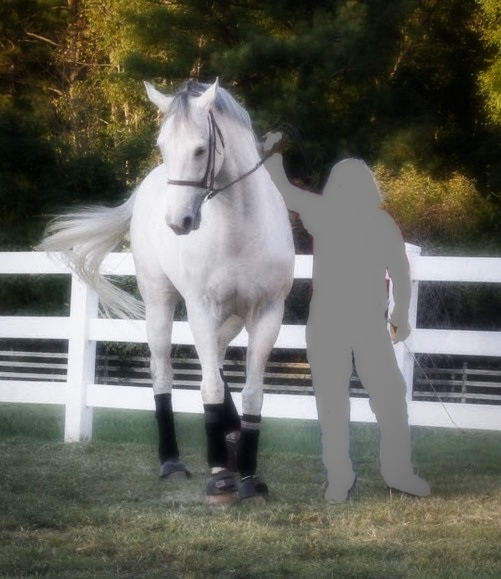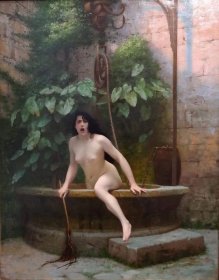The Comfort Zone
The Comfort Zone
Jean Luc Cornille

“Inside of every seed is the DNA of an entire tree and the blueprint of a forest that will grow out of it. You are a seed. You do not ‘have’ what it takes to fulfill your purposes; you are what it takes.” (Jordan Viera)
The question is, why do we perpetuate pre-existing notions that defy the evidence of reality? Why do we turn off our intuition and expect that tradition will fulfill our purposes? We are what it takes to become a good rider, but our DNA is unique. We can feed it with knowledge, but we cannot force it into a posture, which does no fit our physique. There is no rider’s position; there is a coordination that is proper to each individual. Saddles placing the rider in the “right posture,” are pre-existing notions that defy the evidence of reality. So are training techniques placing the horse’s neck in a third level or FEI frame.
Our comfort zone is a litany of antiquated theories to which we have been forced fed under the name of tradition. We are even menaced of ex-communication if we question tradition. This is tyranny; this is the destruction of our senses and intelligence. This is abuse from which we have a hard time to free ourselves. There is no comfort in the comfort zone, not for the horse, not for the rider. The comfort zone is just words, formulas, statements, principles, which became familiar because, paraphrasing Joseph Goebbels, “If you repeat a lie often enough people will believe it, and you will even come to believe it yourself.” We are manipulated both mentally and physically. Our Central Pattern Generators CPGs) involved in locomotion adapt to the discomfort giving us a familiar physical impression.
Our CPGs involved in locomotion can relearn proper motion but only through the practice of proper motion. The difficulty is that while the parts of our brain monitoring our body, such as the cerebellum, feel ease and effortlessness in a better way of using our body, our central pattern generators are used to the old way and resist innovation. There is a conflict within our nervous system that lasts until the CPGs have been reeducated to the new pattern. The same conflict occurs in the horse’s nervous system. The horse’s brain registers the ease and effortlessness associated with better coordination of the body, but central pattern generators remain wired the wrong way. The brain explores, but the nervous system resists.
Moving away from the comfort zone is a laborious and complicates task. “Go easy on yourself. You are clearing thousands of years of outdated conditioning.” (Tohungia Kara) Thomas Pain explains why taking conscience of the problem is a problem. “A long habit of not thinking a thing wrong gives it a superficial appearance of being right.” On a positive note, Ralf Waldo Emerson assures, “The good news is that the moment you decide that what you know is more important than what you have been taught to believe, you will have shifted gears in your quest for abundance. Success comes from within, not from without.” Maria Angelou kindly advises, “Do the best you can until you know better. Then when you know better, do better” But Voltaire exposes the complexity of the human nature, “It is difficult to free fools from the chains they revere.” Even knowledge has its illusions; “The greatest enemy of knowledge is not ignorance; it is an illusion of knowledge.” (Stephen Hawking, 1942-2018)
The horse’s willingness permits such an illusion. If talented enough, the horse performs movements despite the training techniques unrelated to the proper function of the horse’s physique. The horse has done that for centuries, and humans have taken the credit. Charles Darwin noticed that “Ignorance more frequently begets confidence than does knowledge.” The trend opens the door to approaches using comfortable words, “simple,” “thoroughness,” “stretching,” “relaxation,” which are not even closely related to the horse’s function.
In 1896, Jean-Leon Gerome explained his famous painting, “The naked truth coming out of the well.”  “The Lie travels around the world, dressed as the Truth, satisfying the needs of society, because the World, in any case, has no wish at all to meet the naked Truth.” Our ancestors did not lie. Indeed, their wisdom, when updated to actual knowledge, is a portal to the truth. The interpretation of their intuition, as well as their literature, was influenced and limited by the scientific knowledge available at their time. The lie started when an advanced understanding of equine dynamics and functional anatomy, demonstrated the inaccuracy of traditional beliefs. The teaching of our ancestors satisfied the needs of the equestrian society, and riders and trainers had no wish at all to meet the naked truth.
“The Lie travels around the world, dressed as the Truth, satisfying the needs of society, because the World, in any case, has no wish at all to meet the naked Truth.” Our ancestors did not lie. Indeed, their wisdom, when updated to actual knowledge, is a portal to the truth. The interpretation of their intuition, as well as their literature, was influenced and limited by the scientific knowledge available at their time. The lie started when an advanced understanding of equine dynamics and functional anatomy, demonstrated the inaccuracy of traditional beliefs. The teaching of our ancestors satisfied the needs of the equestrian society, and riders and trainers had no wish at all to meet the naked truth.
Submitted horses willingly try to execute the move with a dysfunctional physique. Many became lame, and as the difficulty of the performance increases, even more, became lame. For many horses, lameness is the price of our comfort zone. Paraphrasing Albert Einstein, it takes courage and a touch of genius to go the other way. We are the seed; we have the genius in our DNA, but we have to have the courage to question pre-existing notions that defy the evidence of reality.
When an elder dies, a library burns to the ground burrowing the seed, but the seed grows, became a tree, which provides oxygen, houses wildlife. If we have learned from the elder to respect the tree and the life, we can further the elder’s wisdom, and we can upgrade the wisdom with actual knowledge, we can explore in the unknown, we can push the limits of the possible. “The only way of discovering the limits of the possible is to venture a little way past them into the impossible.” (Arthur C. Clarke).
Nancy Deuel identified in 1990 the limb kinematics peculiarities predisposing the horse for the superior flying change. “The higher-scoring horses increased the contact duration of the hind limbs and decreased the length of step and time between forelimb impacts to prepare to execute the lead change in the succeeding airborne phase.” (Nancy R. Deuel - Canter lead change kinematics of superior Olympic dressage horses - 1990) The ones comfortable in their comfort zone rejected the finding stating that it was impossible to increase the contact duration of the hind limbs. It is indeed impossible acting on the limbs, but if we venture beyond the usual paradigm, limb problems cause back issue. If we explore the thought that limb kinematics are directly influenced by back dysfunction, we can correct limb kinematics abnormalities addressing the thoracolumbar dysfunction. We can venture further and improve limb kinematics abnormalities through subtler education of the back muscles. We can increase contact duration of the hind limbs; we can correct limb kinematics abnormalities leading to navicular syndrome and other issues, we can prevent hocks problems. We can, we can, we can. The journey out of the comfort zone is rich, pertinent, and unlimited.
Want to learn more? Learn about our Online in-hand dressage course


